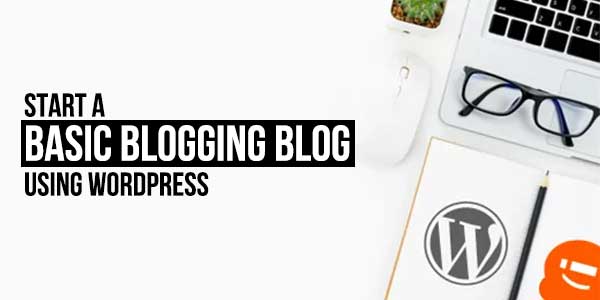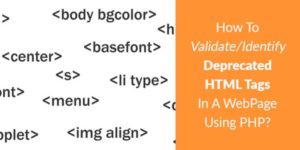
Starting a blogging blog is one of the most rewarding ways to share your knowledge, express your creativity, or even earn an income online. WordPress, being one of the most user-friendly and versatile platforms, is perfect for creating your blog. Whether you’re a beginner or an experienced user, this guide will walk you through every step of starting your blog on WordPress.
Table of Contents
Why Choose WordPress For Blogging?
WordPress powers over 40% of websites worldwide, and it’s no surprise why. Here are the top reasons to use WordPress for your blogging journey:
- Ease Of Use: WordPress is beginner-friendly with an intuitive interface.
- Flexibility: It supports various types of blogs, from personal to professional.
- Extensive Plugins: Thousands of plugins enhance functionality without coding.
- SEO-Friendly: Built-in features help improve your blog’s visibility.
- Scalability: Start small and grow as your audience expands.
“WordPress is the ideal choice for anyone looking to start a blog, thanks to its ease of use, customizability, and scalability.”
Step 1: Choose A Domain Name And Hosting
Your domain name and hosting are the foundation of your blog.
Choosing A Domain Name:
- Reflect on your blog’s niche or theme.
- Keep it short, memorable, and easy to spell.
- Check for availability on domain registrars like Namecheap or GoDaddy.
Selecting A Hosting Provider:
Look for hosting providers offering:
- Reliability: High uptime ensures your blog is always accessible.
- Speed: Faster loading times improve user experience.
- Support: 24/7 customer service for technical issues.
- SSL Certificate: Ensures your site is secure.
Recommended hosting providers:
- Bluehost
- SiteGround
- DreamHost
Step 2: Install WordPress
Most hosting providers simplify the WordPress installation process with a one-click setup.
How To Install WordPress?
- Log in to your hosting account.
- Locate the WordPress installer in the control panel.
- Follow the prompts to complete the installation.
After installation, you’ll receive login credentials for your WordPress dashboard.
Step 3: Choose And Customize A Theme
Your blog’s theme determines its appearance and functionality.
Selecting A Theme:
Browse free and premium themes in the WordPress Theme Directory or marketplaces like ThemeForest. Popular blogging themes include:
- Astra: Lightweight and customizable.
- OceanWP: Offers extensive design options.
- GeneratePress: Focuses on speed and performance.
Customizing Your Theme:
- Navigate to Appearance > Customize in your dashboard.
- Adjust the following:
- Site title and tagline.
- Colours and typography.
- Header, footer, and menu layouts.
“A well-designed theme creates a visually appealing and professional first impression.”
Step 4: Install Essential Plugins
Plugins extend the functionality of your blog. Here are some must-have plugins:
- Yoast SEO: Helps optimize your content for search engines.
- Akismet Anti-Spam: Protects your blog from spam comments.
- Jetpack: Offers security, performance, and marketing tools.
- WPForms: Simplifies adding contact forms.
- MonsterInsights: Provides Google Analytics integration.

Step 5: Create Essential Pages
Every blog should include these pages to establish credibility and provide a great user experience:
- Home Page: Introduces your blog and its purpose.
- About Page: Share your story and mission.
- Contact Page: Allows readers to reach you easily.
- Privacy Policy: Outlines how you handle user data.
To create a page, go to Pages > Add New in your dashboard.
Step 6: Write And Publish Your First Blog Post
Content is the heart of your blog. Here’s how to get started:
Writing Your Blog Post:
- Go to Posts > Add New.
- Write a captivating title and introduction.
- Structure your content with headings and subheadings.
- Add images, videos, or infographics for visual appeal.
- Optimize for SEO using Yoast or RankMath.
Publishing Your Blog Post:
- Preview your post to ensure everything looks good.
- Click Publish to make it live.
“Engaging content keeps readers coming back for more and helps establish your authority in your niche.”
Step 7: Promote Your Blog
Attracting readers to your blog requires consistent promotion. Here are some strategies:
- Social Media: Share your posts on platforms like Twitter, Instagram, and LinkedIn.
- Email Marketing: Build an email list and send newsletters.
- Networking: Collaborate with other bloggers in your niche.
- Guest Blogging: Write for other blogs to reach new audiences.
Step 8: Monitor And Improve Performance
Track your blog’s performance to identify areas for improvement.
Tools For Monitoring Performance
- Google Analytics: Provides insights into traffic and user behaviour.
- Search Console: Helps track search engine performance.
- Hotjar: Offers heatmaps to analyze user interaction.
Conclusion
Starting a blogging blog using WordPress is a straightforward process when broken down into manageable steps. With the right domain, hosting, theme, plugins, and content, you’re well on your way to building a successful blog. Remember to keep learning, experimenting, and refining your blog as you grow. Happy blogging!


















An insightful and beautifully written piece—your words truly capture the essence of the topic and offer a fresh perspective. Thank you for sharing such valuable thoughts!
Welcome here and thanks for reading our article and sharing your view. This will be very helpful to us to let us motivate to provide you with more awesome and valuable content from a different mind. Thanks again.